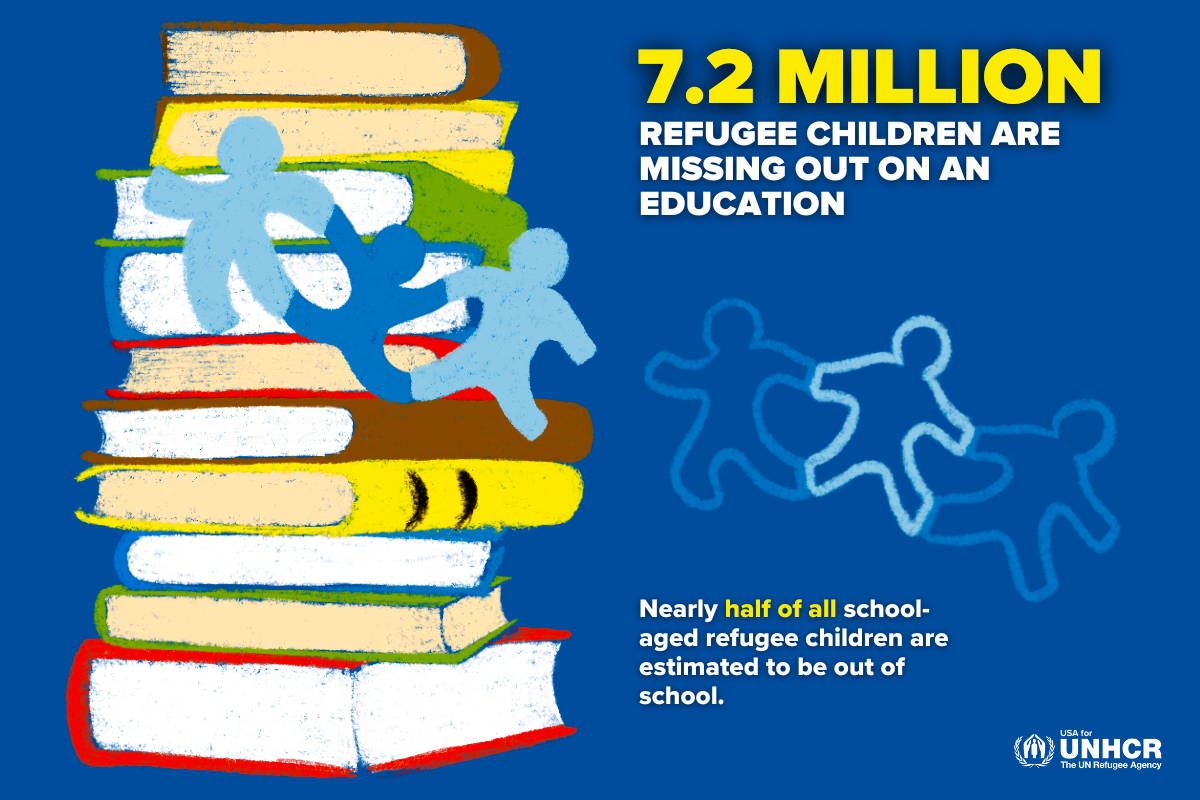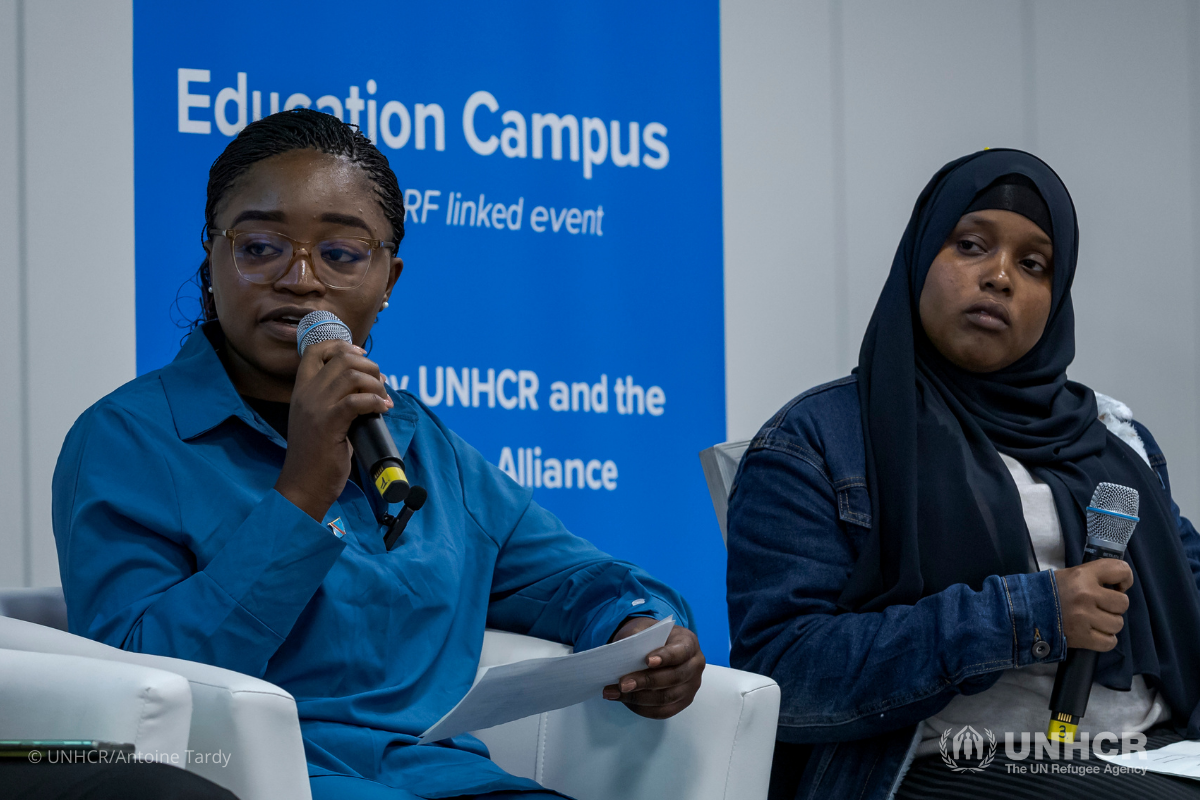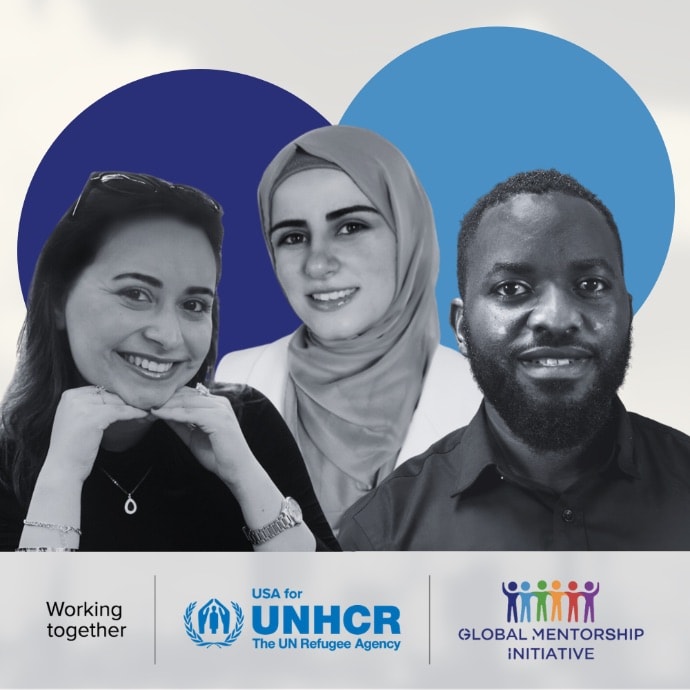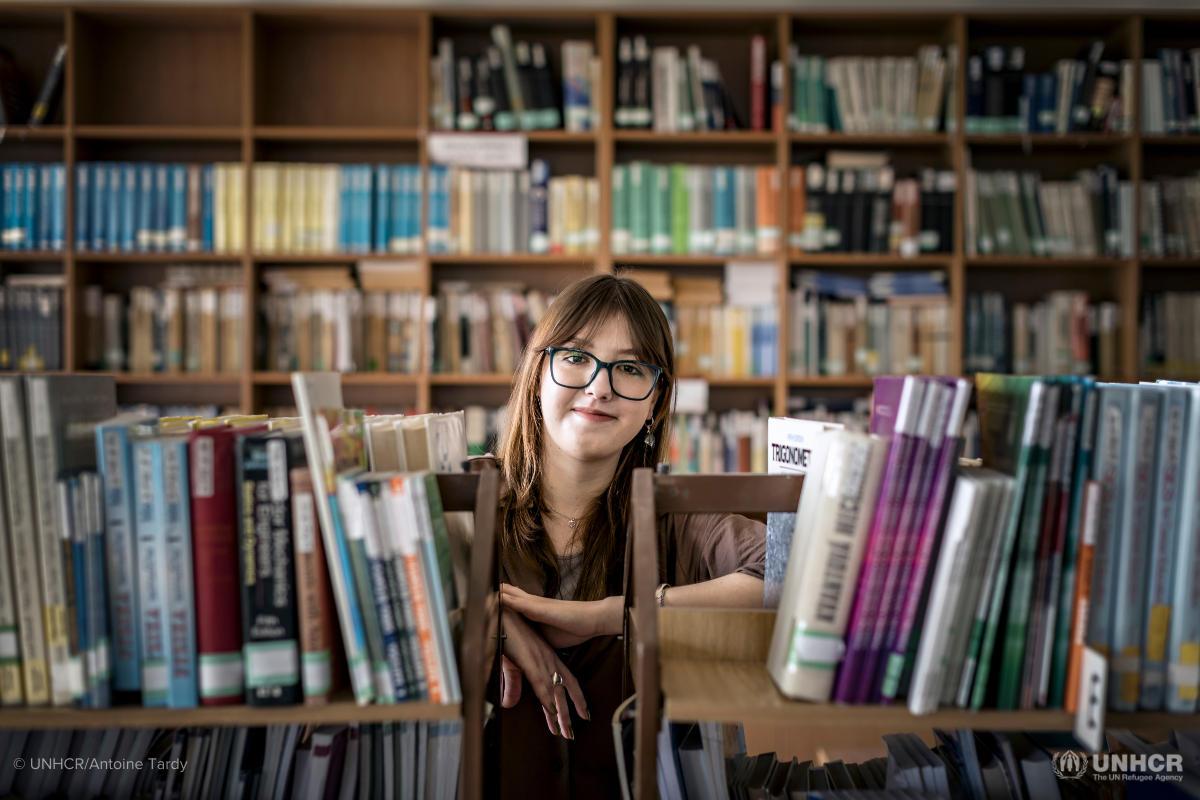Five Takeaways from UNHCR's 2024 Education Report
Five years ago, UNHCR, the UN Refugee Agency, launched the 2030 Refugee Education Strategy. At that time, 35 percent of primary school-age and 75 percent of secondary school-age refugee children were out of school. Only 3 percent of refugees were enrolled in tertiary education globally. As the forcibly displaced population continues to rise every year, a significant proportion of the world’s children are missing out on an education.
This year’s refugee education report reveals that while remarkable progress has been achieved in global refugee education and enrollment, significant challenges remain.
Here are five takeaways from UNHCR’s report, “Refugee education: Five years on from the launch of the 2030 refugee education strategy.”
1. Nearly half of all school-aged refugee children are estimated to be out of school.

By April 2024, more than 120 million people globally were displaced, including 31.6 million refugees. Of this population, 14.8 million are school-aged — 49 percent of whom are estimated to be out of school. That means 7.2 million refugee children are missing out on an education.
2. Refugee learners can excel with the right opportunities.

This year’s report reveals that, similar to previous years, the average gross enrollment rates for refugees stand at 37 percent at the pre-primary level, 65 percent at the primary level, 42 percent at the secondary level and 7 percent at the tertiary level.
Despite obstacles to pursuing higher education, refugees who partake in national examinations tend to have high pass rates at all levels — at times exceeding the national average. In UNHCR’s reporting countries, 82 percent of refugee students who took primary exams passed.
UNHCR continues to work towards a 15 percent enrollment of refugees at the tertiary level by 2030 (the 15by30 target), supporting this effort through educational programs that empower young refugees to pursue higher education.
3. Gender parity is still the goal.

Gender disparities in access to education for refugees remain. In this year’s report, the countries with the most significant gender disparities, as featured in last year’s education report, were mapped using the refugee Gender Parity Index (GPI). The data indicates that none of the countries have achieved gender parity in access to primary education, but some important increases have been made.
There have been modest increases in the GPI in Kenya (0.77 to 0.82) and Ethiopia (0.69 to 0.76) in the past four years. This means that disparities affecting girls have been reduced, moving closer to gender parity.
At the secondary level, there are much larger gaps in the achievement of gender parity, as none of the countries featured have a GPI larger than 0.8.
4. A significant proportion of refugee children and youth from Ukraine remain out of school in host countries.

As 700,000 refugee children and youth from Ukraine begin their fourth school year away from home, more than 600,000 school-aged youth remain out of school. While there has been significant progress with enrollment in host country national education systems, overall enrollment rates of refugee children and youth remain well below the average enrollment of local school-age populations in most host countries.
In some countries hosting Ukrainian refugees, including the Republic of Moldova, Bulgaria and Hungary, enrollment rates stand at 8 percent, 18 percent and 29 percent, respectively. Recent household surveys suggest that low enrollment rates are due to a combination of factors, including a preference for attending Ukrainian online and remote learning courses, language barriers, waiting for a response from the school and lack of space.
Hundreds of thousands remain out of school this school year or are relying solely on informal remote and online education. This suggests that the Ukraine refugee emergency is evolving into a protracted refugee education crisis that may affect the well-being, safety and future prospects of refugee children and youth from Ukraine for years to come.
5. At the 2023 Global Refugee Forum, three multi-stakeholder pledges were made to support refugee children’s education.

The 2023 Global Refugee Forum was the second convening of the Global Refugee Forum and provided an opportunity for the international community to come together in support of refugees and host communities and to strengthen their commitments and responsibility-sharing.
Within education, there were three multi-stakeholder pledges:
1. Securing sustainable futures: Aiming to ensure that all refugee children realize their right to a quality education and are included in national education systems; 149 pledges were made including key commitments from host governments to improve access to education systems, increase the number of qualified teachers and construction of new schools.
2. 15 percent by 2030: Aiming to achieve enrollment of 15 percent of refugee youth in higher education by 2030; 107 pledges were made including building new technical/vocational training centers, scholarships for refugee scholars, upgrades to schools and classrooms and providing quality and accredited skills training to refugee and host communities.
3. Expanding connected education for refugees through the Refugee Connected Education Challenge: Aiming to ensure universal access to high-quality connected education for refugees by 2030; 38 pledges were made—building on the success of Vodafone Foundation's Instant Network Schools (INS) and the ProFuturo Foundation partnership.
How to Help…
UNHCR, the UN Refugee Agency supports the full journey of refugees who have been forced to flee violence, war and persecution. Our donors help refugees in their greatest time of need with shelter, food, water and medical care, and their support builds awareness for resettled refugees living in the U.S. With your help, more refugees will have the opportunity to build peaceful lives and give their families a bright future.


